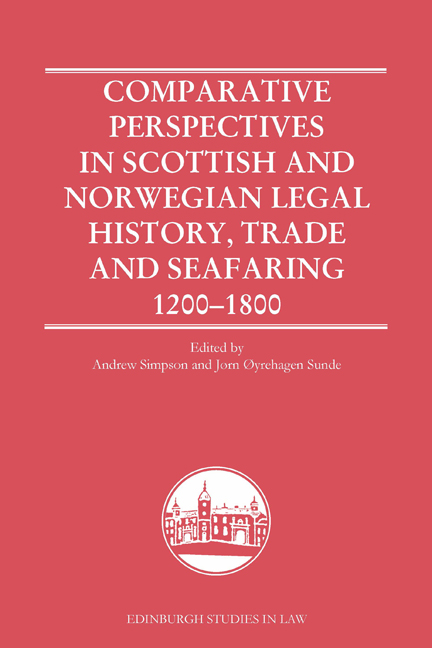9 - Norm and Fact: Timber trade in early modern western Norway (1530–1730)
Published online by Cambridge University Press: 17 November 2023
Summary
A: INTRODUCTION
From the late medieval period, all timber trade from western Norway to Scotland, England and the European continent was supposed to be subject to monopolies held by trading posts such as the cities of Bergen and Stavanger. However, most timber trade was carried out in such a way as to avoid the cities and often to evade taxation. The court rolls of the rural areas around Bergen document the authority's fruitless efforts to regulate a market contrary to the interests of the involved economic actors until the end of the seventeenth century. This paper attempts to answer the question why the legal framework for the North Sea trade failed to realise the legislator's intention. In other words, why did norm and fact fall apart?
It is often said that legal regulation of trade is a key factor of economic growth and success. Law is supposed to provide predictability, which in turn would facilitate efficiency of transactions. A sufficiently clear legal framework is a precondition for legal certainty. However, trade regulations contrary to the interest of most of the actors involved are doomed to be ineffective unless sufficiently enforced by authorities. Where such authorities are lacking, or are not capable of efficiently enforcing the law, market forces will prevail. Frequent attempts to regulate timber trade against the interests of producers, merchants and end consumers in early modern Norwegian-Scottish timber trade provide an example illustrating the point.
Since the thirteenth century, royal legislation was recognised as an effective means of regulating social behaviour and trade relations. However, the legal regulations concerning the trade with foreigners in the rural areas of western Norway, especially regarding timber, were strikingly different from trading practice. In other words, there was a considerable gap between the normative order and the trade reality.
To render the paper relevant for the topic of this volume and to limit the rich source material concerning the timber trade in western Norway, we will focus on the timber trade with Scotland, which flourished in this region especially from the sixteenth century to the early eighteenth century. The scope of the paper is limited to fir timber, deals and battens, as these constituted the largest volumes of the timber exported to Scotland.
- Type
- Chapter
- Information
- Comparative Perspectives in Scottish and Norwegian Legal History, Trade and Seafaring, 1200-1800 , pp. 272 - 296Publisher: Edinburgh University PressPrint publication year: 2023



